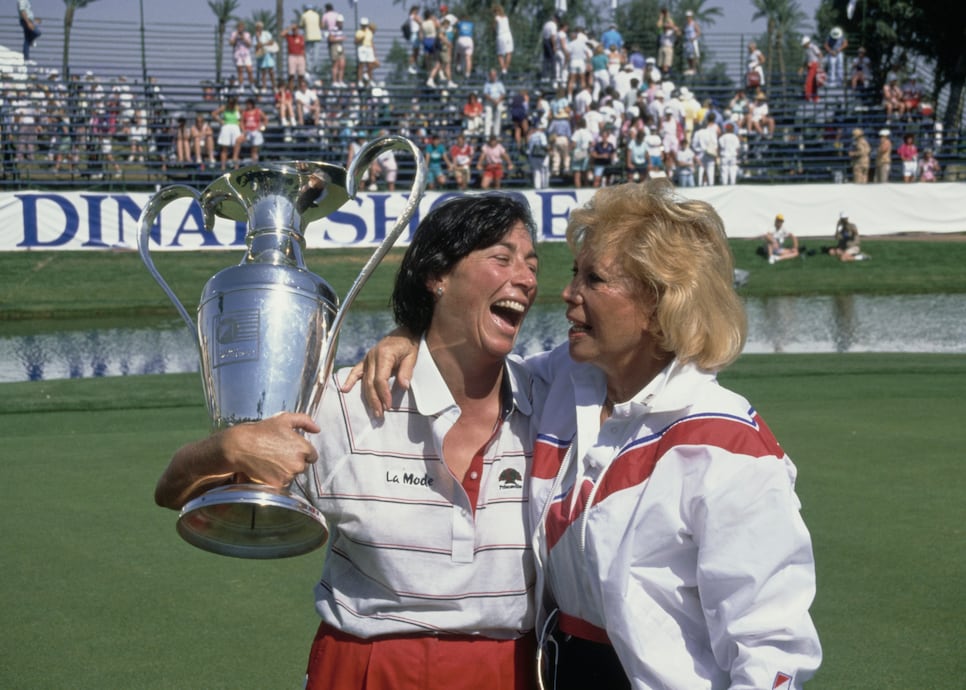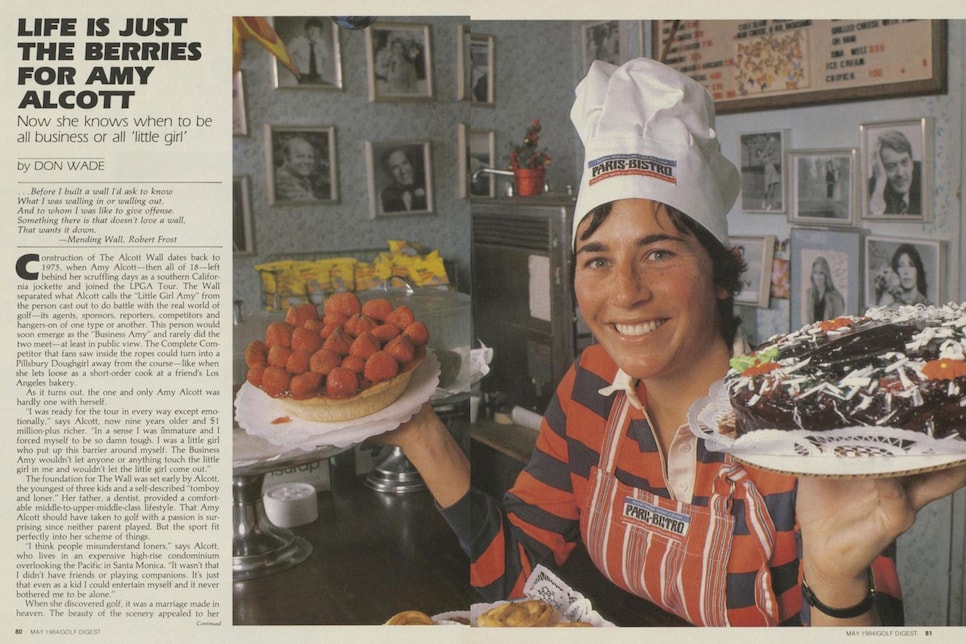range sessions
This simple tip from Amy Alcott will help make you a better shot-maker

David Cannon
In Don Wade’s profile on Amy Alcott from the May 1984 issue of Golf Digest—"Life is Just the Berries for Amy Alcott"—he tells the story of the unabashedly confident player who became just as good as she promised she’d be. She came out on tour as a rookie saying she expected to win and went on to amass 29 LPGA wins throughout her career.
There’s an brief but interesting moment in the piece where Alcott gives insight into the practice sessions she had with her instructor, Walter Keller, who coached her since childhood.
"With Walter it was never a question of just mindlessly beating balls," Alcott says. "Every ball was hit with a specific thought in mind. He'd call the shots—high fade, knock-down 5-iron, draw—right through the bag. He taught me to be a shot-maker, and I take a great deal of pride in that. For me, golf is a creative process, like being an artist."

(Golf Digest+ members get access to the complete Golf Digest archive dating back to 1950. Sign up here.)
There’s a crucial lesson in Keller’s coaching technique that amateurs can benefit from: By doing this drill, Alcott’s range sessions were focused on replicating scenarios she would find on the golf course. To get the most out of your range session, you need to purposefully work on real golf shots as well.
“We get so into technical mode, we have to remember there’s still a skill component to this game,” Jason Guss, a Golf Digest Best Teacher in the state of Illinois, says. “I say to my students, if you’re waiting for your swing to be perfect to play good golf, you might be dead before it happens. You have to play the game. You want to be able to use your skill and your hands to control the golf ball.”
By calling shots for yourself like Keller did for Alcott, you can train your shot-making skills on the range.
If asking yourself to hit draws, fades, knockdowns and other shots on command sounds like it's above your current skill level, there’s another way you can apply Alcott’s range technique to your game.
Guss says that he often sees amateurs hitting balls on the range who are only willing to call a shot “good” if it goes right at the flag they’re aiming at.
“That’s not real life,” Guss says. “Rarely in golf do you have to hit a perfect shot. You have three scenarios for each shot: A great shot that ends up right next to the flag; an OK shot that lands in a safe place; or a shot that ends up in a terrible area where you can’t get up and down.”
When you’re on the range, Guss says to create a situation in your head where you’re trying to hit your shot to the great or OK spots, avoiding the terrible area. So, you’d look at the flag—or whatever marker your range has out there and pretend it’s a flag—and then decide that left of the flag is safe, and right is a hazard you need to avoid. Then try to hit a shot that ends up either right near the flag or left of it. Keep switching the scenario up throughout your range session—make the safe zone right, or long, or short.
You’re going to get a lot more out of this Amy Alcott-inspired range session than mindlessly hitting balls for an hour. You might just become a bit of a shot maker.

